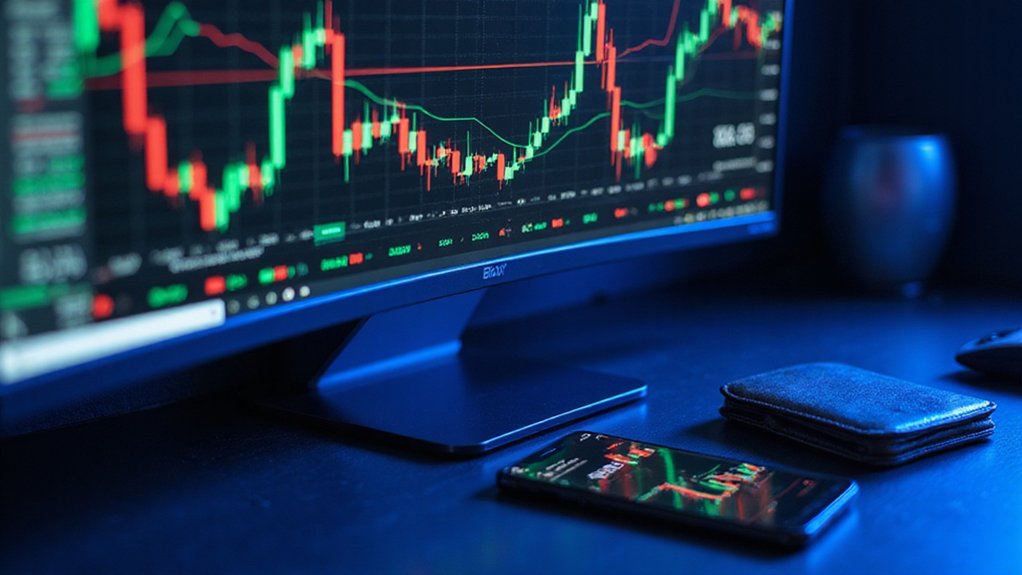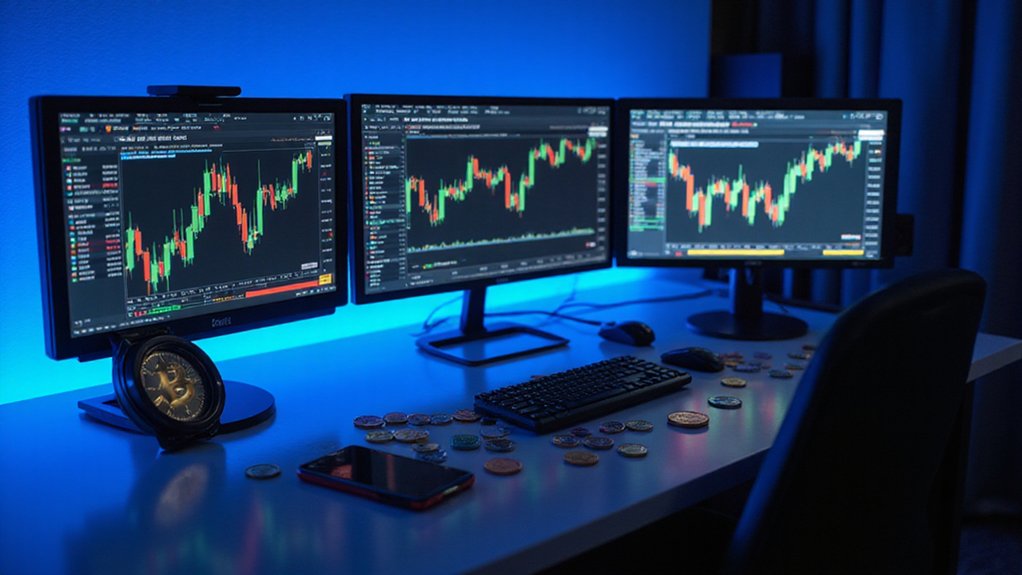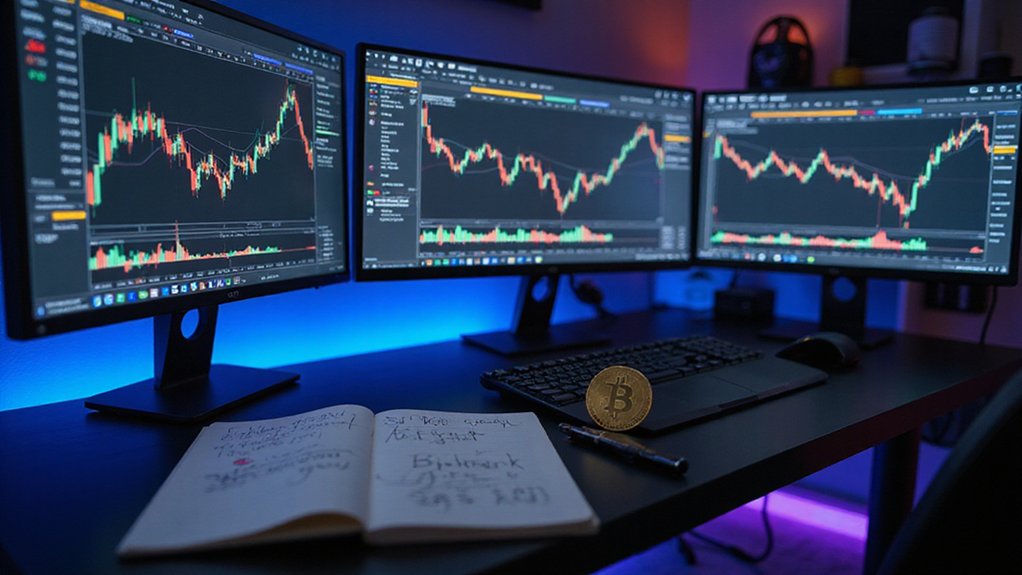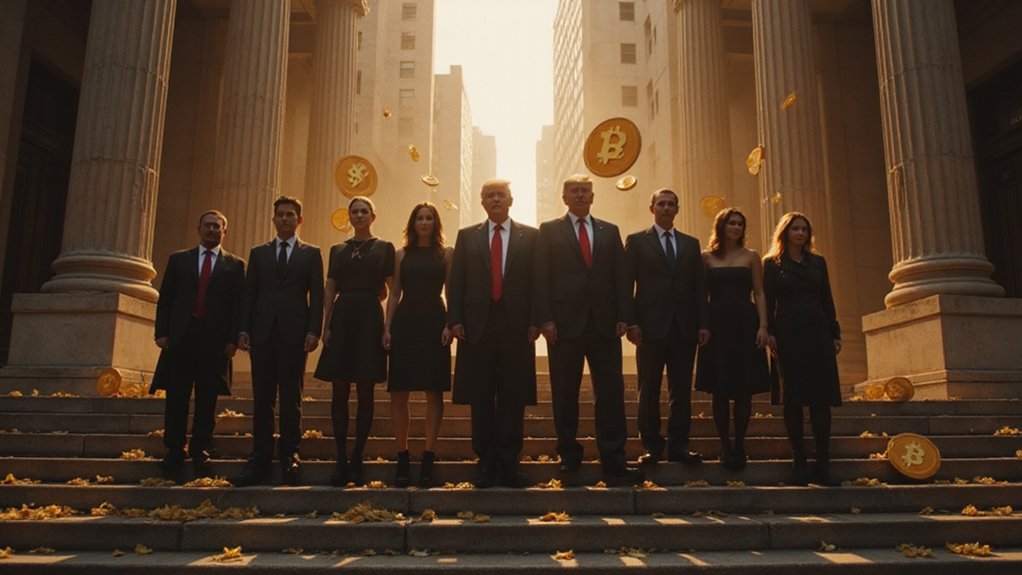Bilaxy, a Seychelles-registered crypto exchange operating since 2018, offers nearly 1,000 trading pairs across 300+ cryptocurrencies without fiat support. Its interface integrates TradingView charts on both desktop and mobile platforms, charging a flat 0.2% commission (reducible to 0.1% with BIA tokens). Despite 24/7 support and regular promotions, security concerns persist following a $21 million hack in 2021, with limited transparency and a concerning TU score of 3.35/10. Further examination reveals critical limitations traders should consider.

A relatively obscure player in the cryptocurrency exchange landscape, Bilaxy emerged in April 2018 as a centralized trading platform that has since carved out its niche by offering an impressively diverse array of crypto-to-crypto trading pairs.
Registered in Seychelles—that familiar harbor of regulatory flexibility—this exchange operates in over 80 countries while maintaining a conspicuous absence of fiat currency support, effectively sequestering its operations entirely within the crypto ecosystem.
The platform’s trading infrastructure utilizes TradingView terminals, providing sophisticated charting tools for desktop users while extending similar functionality to mobile traders via iOS and Android applications.
Bilaxy’s fee structure presents a straightforward proposition: a flat 0.2% commission for both market makers and takers—marginally undercutting historical industry averages—with potential reduction to 0.1% when leveraging the platform’s native BIA token for fee settlement.
Trading fees at a flat 0.2% on both sides—half that when paying with BIA tokens—position Bilaxy competitively against industry standards.
What truly distinguishes Bilaxy is its roster of nearly 1,000 trading pairs across more than 300 cryptocurrencies, including an extensive selection of altcoins that frequently escape listing on more prominent exchanges.
The security history of Bilaxy includes a significant 2021 hack that resulted in approximately $21 million in stolen funds from its hot wallet.
This cornucopia of obscure tokens (paired variously with USDT, BNB, BTC, and ETH) represents both Bilaxy’s primary competitive advantage and its characteristic risk profile.
Notably absent from Bilaxy’s offerings are margin trading, leverage capabilities, and conventional investment products such as staking or lending—a simplicity that, while potentially limiting sophisticated trading strategies, may actually serve risk-averse traders seeking straightforward exposure to crypto markets.
The exchange maintains a perpetual 24/7 support system via tickets and email, supplemented by communication through official social channels.
However, its relative opacity regarding security protocols and insurance provisions raises legitimate concerns about asset protection.
This lack of transparency, coupled with limited regulatory oversight, underscores why prudent traders might approach Bilaxy with measured caution despite its alluring diversity of trading options and competitive fee structure.
The platform’s overall TU score of 3.35 out of 10 reflects significant risk considerations that potential users should carefully evaluate before committing substantial assets.
The platform’s ongoing contests, airdrops, and referral program nonetheless provide additional incentives for those willing to navigate these inherent uncertainties.
Unlike HTX exchange which implements comprehensive security through Proof of Reserves and multi-party custody systems, Bilaxy offers limited information about its security infrastructure.
Frequently Asked Questions
How Secure Is Bilaxy Compared to Other Cryptocurrency Exchanges?
Bilaxy falls significantly short on the security spectrum.
The exchange’s 2021 hot wallet hack, coupled with its troubling lack of transparency regarding team composition, suggests a concerning vulnerability profile.
Unlike industry leaders, Bilaxy offers no insurance coverage for user funds and operates from Seychelles—a jurisdiction not exactly renowned for stringent regulatory oversight.
While basic security measures exist (2FA, cold storage), the absence of thorough protections places it decidedly behind more established exchanges.
What Are Bilaxy’s Withdrawal Fees for Major Cryptocurrencies?
Bilaxy employs a dynamic fee structure for withdrawals that fluctuates with network conditions—a practice not uncommon in the crypto ecosystem.
Historically, Ethereum withdrawals cost around 0.02 ETH, though this figure hardly remains static.
The exchange doesn’t publish a detailed fee schedule, instead revealing exact costs only at the withdrawal stage.
This opacity, while frustrating, stems from the platform’s need to adjust for network congestion and blockchain stability in real-time.
Does Bilaxy Offer Staking or Yield Farming Options?
Bilaxy, despite its roster of 300+ cryptocurrencies, offers no native staking or yield farming options—a curious omission in today’s yield-obsessed market.
Users seeking passive income are limited to the exchange’s referral program, though third-party integrations provide workarounds for the determined yield-hunter.
This absence may reflect Seychelles’ regulatory landscape or simply Bilaxy‘s strategic positioning, forcing users to look elsewhere for those coveted APYs that crypto enthusiasts chase with near-religious fervor.
How Responsive Is Bilaxy’s Customer Support Team?
Bilaxy’s customer support presents a mixed bag of responsiveness.
While technically available 24/7 through tickets, email, and social media, user experiences vary dramatically.
Many report extended delays with pending issues (particularly withdrawals) and cases of unanswered queries.
Some users have even faced bans from Telegram support channels.
The absence of direct phone support further complicates matters, leaving customers entirely dependent on digital channels where resolution timing remains unpredictable at best.
Can I Use a VPN While Trading on Bilaxy?
While using a VPN with Bilaxy is technically possible, users should approach this practice with caution.
VPNs may help bypass geographic restrictions and enhance privacy, but the practice potentially violates Bilaxy’s terms of service—a detail most traders conveniently overlook.
Premium VPNs offer better security than free alternatives, which often compromise data integrity.
Users must weigh the benefits of access against potential regulatory compliance issues and the risk of account termination.









